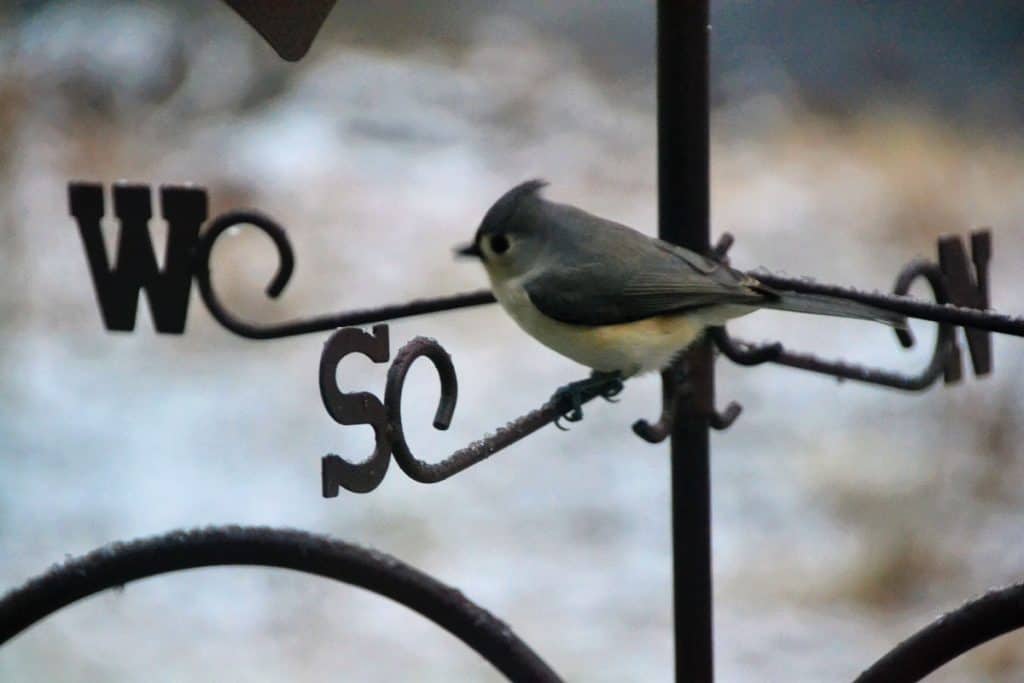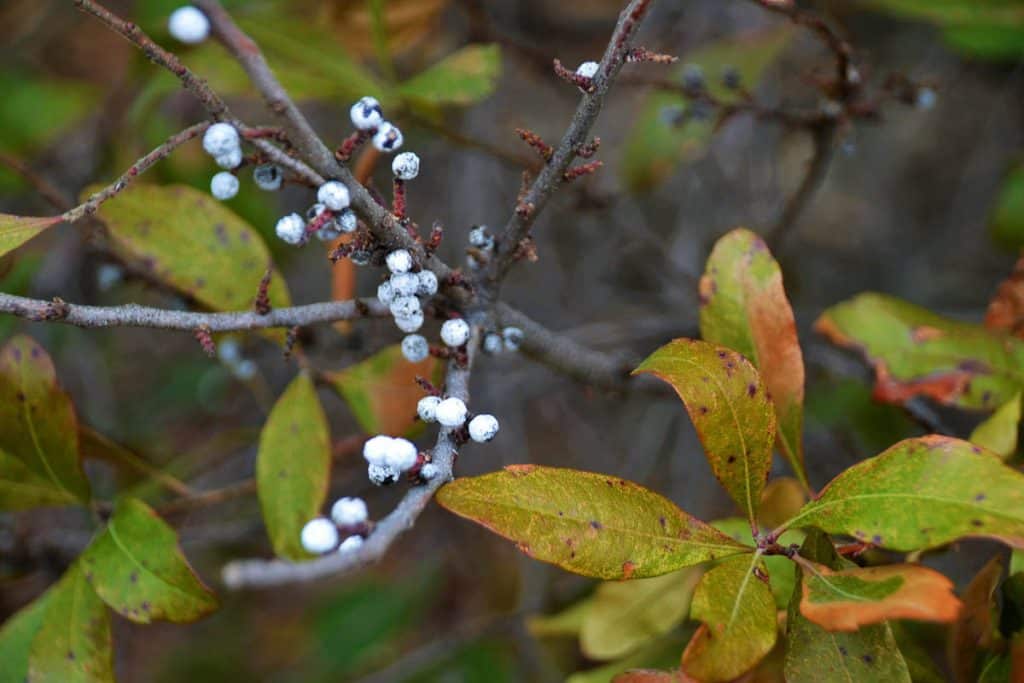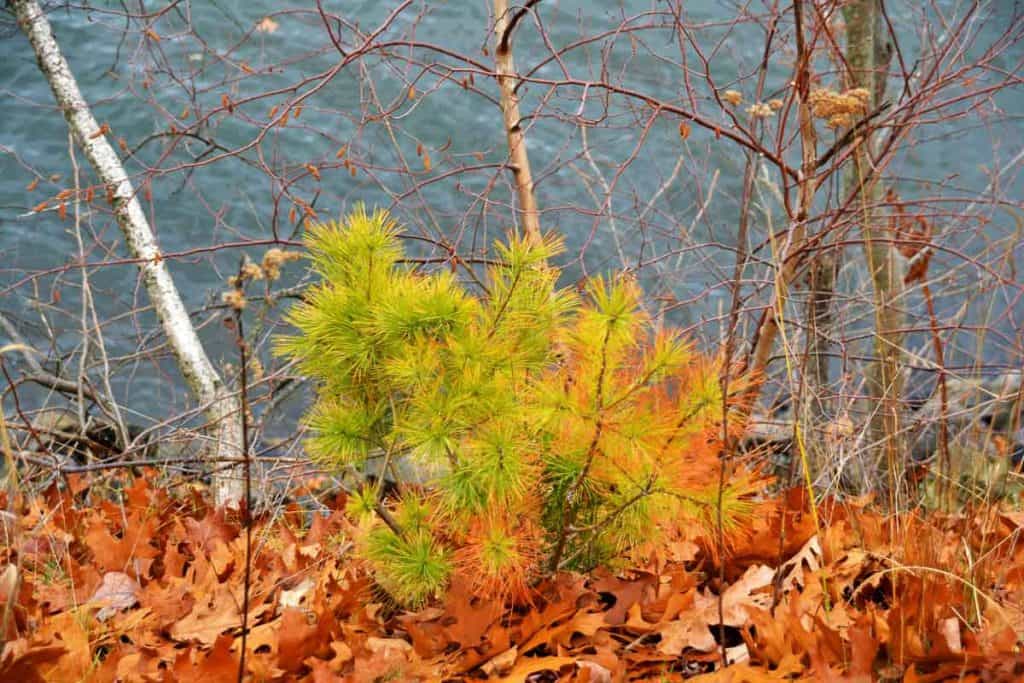Here’s what’s blooming in town this week to make your walks more enjoyable
By Laura Eisener
Tu B’Shvat is the Jewish festival often called the Birthday of the Trees. It is celebrated from sundown Sunday, Feb. 5 to sundown Monday, Feb. 6 this year. Ruth Berg and Randy Abber sent me some information on this holiday. In Israel, it is often celebrated by planting trees, but in our climate the ground is generally frozen in February. Other traditional ways to celebrate include feasting with a variety of traditional fruits, while being mindful of the many gifts of nature that come to us from trees and other plants. Some people take care to eat 15 different fruits to correspond with the date, since Tu B’Shvat falls on the 15th day of the 11th month of the year in the Jewish calendar. It is also a time for appreciating the environment so has sometimes been called the Jewish Earth Day. As the “Birthday of the Trees,” the date indicates when trees begin to bud and start their new year, an indicator of spring. Even in our climate, if you are observant, you may see the beginnings of green new growth on many plants even if it will be a few months before we see new leaves emerge. Hopefully, by then we will see seedling trees sprouting in the woods, especially in the fire-ravaged areas of Breakheart Reservation.
With Valentine’s Day approaching, heart-shaped wreaths are appearing on doors, and the shops are full of gifts and cards. All year round, there is a heart-shaped greeting at the entrance to Saugus Iron Works, but many people pass by without noticing. The gate at the front entrance has a latch with fancy iron details, including flower forms and a heart-shaped leaf with a ladybug on it. This fanciful detail was made by a blacksmith at the Iron Works after the National Park Service took over the site in the latter part of the 20th century.
Anyone with a clear view to the north recently may have been treated to a view of the greenish comet named C/2022 E3 (ZTF), which is passing through the solar system for the first time in 50,000 years. It is passing between the Big and Little Dippers and will be closer to Mars as the week goes on. It will continue to be visible on clear nights for the next few weeks, but brightness of the sky around the full moon on February 5 may make it more difficult to see the comet.
In addition to being known as Groundhog Day, yesterday (Feb. 2) is a Christian holy day known as Candlemas. One tradition, from the days before electric lights, is to bring candles to the church to be blessed on that day. Northern bayberry (Formerly Myrica pensylvanica, but some scientists argue it should now be called Morella pensylvanica) is an iconic New England species historically associated with local candle making. Two large bayberry shrubs grow on each side of the front door of 232 Central St., a former house now used as offices for Saugus Iron Works. A common native plant in coastal areas, several bayberries can also be seen in other areas of Saugus, including Rumney Marsh Area of Critical Environmental Concern (ACEC).
The small berries, which can remain on the shrubs through the winter, have a pale grayish, waxy coating which is the part of the plant used to make candles. The wax layer is very thin, and the berries themselves quite tiny, so you will need to boil a lot of berries to make a single candle. Usually, the bayberry wax is mixed with beeswax, but the distinctive bayberry fragrance is still very noticeable. Most gift shops on Cape Cod seem to be heavily scented with bayberry from all the candles, soaps and other items that evoke a strong sense of New England’s iconic scent.
The leaves are semi-evergreen, which means that at least some of the foliage remains on the plant for part or all of the winter. The two shrubs in front of 232 Central still have most of their foliage. Bayberries can reach 10-15 feet tall if not pruned. Very salt tolerant, bayberry is able to grow in very infertile soils because the roots host bacteria that “fix” nitrogen from the air. Staminate (male) and pistillate (female) flowers are on separate shrubs, so isolated plants cannot produce berries.
Editor’s Note: Laura Eisener is a landscape design consultant who helps homeowners with landscape design, plant selection and placement of trees and shrubs, as well as perennials. She is a member of the Saugus Garden Club and offered to write a series of articles about “what’s blooming in town” shortly after the outbreak of the COVID-19 pandemic. She was inspired after seeing so many people taking up walking.







